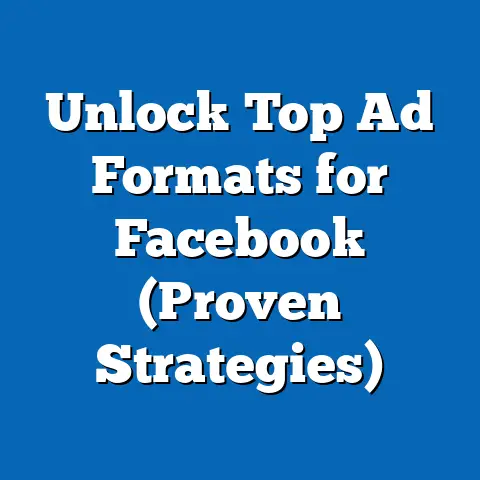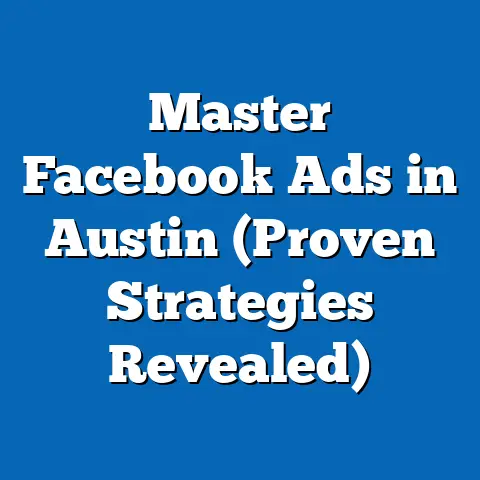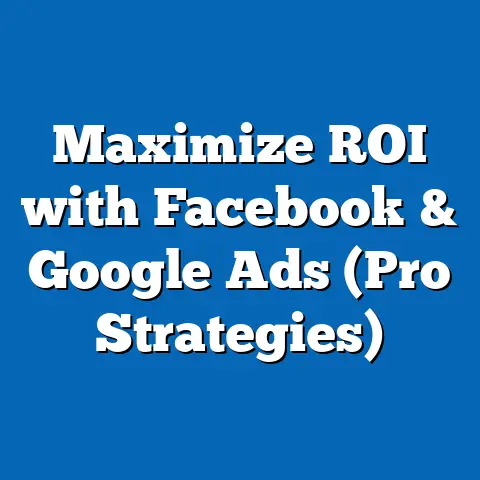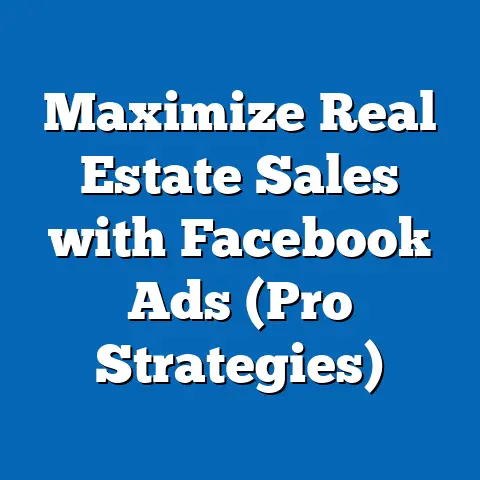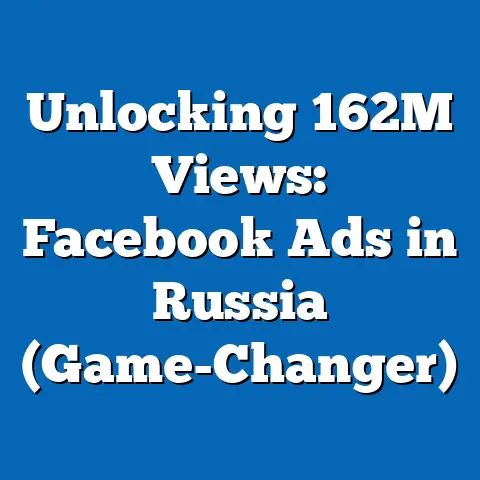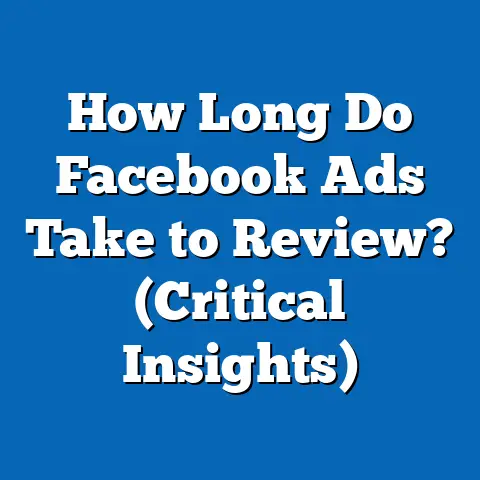Optimize Facebook Ads Resolutions (Game-Changing Tips)
Optimize Facebook Ads Resolutions: Game-Changing Tips
Are you pouring hours into Facebook ads, only to be met with lackluster results? Do you feel like you’re throwing money into a digital abyss, hoping something sticks? I get it. I’ve been there. Many marketers and business owners experience this frustration. But what if I told you that a seemingly small tweak – optimizing your Facebook ad resolutions – could be the key to unlocking a whole new level of performance? It’s true!
Optimizing your Facebook Ads for improved performance and ROI is not just about creating visually appealing content. It’s about understanding the platform’s nuances, tailoring your approach to different audiences, and staying ahead of the curve. Think of effective resolution strategies as the secret sauce that can save you time, boost engagement, and dramatically enhance your ad’s overall effectiveness. In this article, I’m going to share actionable tips that can transform your advertising approach. Let’s get started!
Understanding Facebook Ads Resolutions
So, what exactly do I mean by “resolutions” in the context of Facebook ads? It’s more than just pixels. It encompasses the clarity, dimensions, and overall visual quality of your ads. It also includes understanding the campaign objectives that align with those resolutions.
Think of “resolutions” as the clarity, dimensions, and overall visual quality of your Facebook ads. It’s about making sure your ads look crisp and professional, no matter where they appear on the platform. More than just pixel counts, it’s about optimizing visual elements to resonate with your target audience.
There are several types of resolutions you need to consider:
- Image Resolution: The number of pixels in an image. Higher resolution means a sharper, clearer image.
- Video Resolution: Similar to image resolution, but for videos. Again, higher resolution results in better video quality.
- Campaign Objective Resolution: Making sure your ad creative (including its resolution) aligns with your campaign goal, whether it’s brand awareness, lead generation, or sales.
Choosing the right resolution for different ad formats is critical. A blurry, low-resolution image can make your brand look unprofessional, while a pixelated video can deter viewers from watching. This directly impacts user engagement and conversion rates.
Why does this matter? Because first impressions matter. A study by HubSpot found that 80% of marketers believe visual assets are crucial for their social media marketing strategy. And that’s because visuals are the first thing people notice. They are the hook that stops the scroll. If your visuals are subpar, you’re already at a disadvantage.
Let me share a personal experience. I once worked with a client who was running Facebook ads for a high-end furniture brand. Their products were beautiful, but their ad images were low-resolution and poorly lit. The ads were getting impressions, but very few clicks. After we upgraded the images to high-resolution, professionally shot photos, the click-through rate (CTR) increased by over 150%! That’s the power of quality visuals.
Takeaway: Understanding and optimizing your Facebook ad resolutions is the first step towards creating more effective and engaging campaigns. Pay attention to the details!
The Importance of Quality Visuals
High-quality visuals are the cornerstone of effective Facebook ads. They grab attention, convey your message, and ultimately drive conversions. Think of your ad as a miniature billboard – you have a limited amount of time to make an impact.
Here’s how high-quality visuals contribute to the overall effectiveness of your Facebook ads:
- Grabbing Attention: In a crowded newsfeed, eye-catching visuals are essential to stop the scroll.
- Conveying Your Message: Visuals can communicate complex ideas quickly and effectively.
- Building Trust: Professional-looking visuals build trust and credibility with your audience.
Facebook recommends specific image and video dimensions for various ad placements. Here are a few key guidelines:
- Newsfeed Image Ads: 1200 x 628 pixels (minimum). I always recommend going higher for retina displays.
- Newsfeed Video Ads: 1280 x 720 pixels (minimum). Again, higher is better.
- Stories Ads: 1080 x 1920 pixels (full portrait mode).
I’ve found that sticking to these dimensions helps ensure your ads look great on all devices.
Here are some tips on creating visually appealing content that adheres to Facebook’s best practices:
- Use Clear Imagery: Choose images that are sharp, well-lit, and relevant to your product or service.
- Appropriate Color Schemes: Use colors that are consistent with your brand and that appeal to your target audience.
- Compelling Typography: Choose fonts that are easy to read and that complement your overall design.
Let’s look at some examples of successful ads that utilized optimal resolutions:
- Nike: Their ads often feature stunning, high-resolution images of athletes in action. The visuals are dynamic, inspiring, and perfectly aligned with their brand.
- Airbnb: They use high-quality photos of beautiful homes and apartments around the world. The visuals are aspirational and entice users to book a stay.
These brands understand the power of quality visuals. They invest in professional photography and videography to create ads that truly stand out.
Takeaway: Don’t skimp on visuals. Invest in high-quality images and videos that will capture your audience’s attention and convey your message effectively.
Targeting the Right Audience
You could have the most visually stunning ad in the world, but if you’re showing it to the wrong people, it’s not going to work. Audience targeting is a critical component of Facebook advertising success.
Optimizing your ad resolutions can be tailored to specific audience segments, enhancing engagement. For example, if you’re targeting a younger audience, you might want to use more dynamic, visually stimulating ads. If you’re targeting an older audience, you might want to use more classic, elegant visuals.
Facebook offers a wealth of audience insights and analytics tools that can help you better understand your target audience. Here are a few tips:
- Use Facebook Audience Insights: This tool provides detailed demographic and interest data about your audience.
- Analyze Your Website Traffic: Use Google Analytics to see which demographics are visiting your website and converting.
- Create Custom Audiences: Upload your customer list or create lookalike audiences based on your existing customers.
A/B testing different ad resolutions is crucial to see which resonates more with your target audience. For example, you could test a high-resolution image ad against a video ad with the same message.
I remember working with a local restaurant that wanted to attract more customers. We ran two different ad campaigns: one targeted to young professionals with visually appealing food photography and the other targeted to families with heartwarming videos of families enjoying meals together. The results were remarkable. The young professionals campaign saw a 40% increase in reservations, while the families campaign saw a 30% increase in foot traffic.
Takeaway: Understand your audience and tailor your ad resolutions to their preferences. A/B test different approaches to see what works best.
Leveraging Facebook Ad Formats
Facebook offers a variety of ad formats, each with its own unique strengths and resolution requirements. Understanding these formats and how to use them effectively is essential for maximizing your advertising ROI.
Here are some of the most popular Facebook ad formats:
- Image Ads: Simple and effective for showcasing a single product or service.
- Video Ads: Engaging and dynamic for telling stories and demonstrating products.
- Carousel Ads: Allow you to showcase multiple products or features in a single ad.
- Slideshow Ads: Create a video-like experience using a series of still images.
- Collection Ads: Showcase a catalog of products in a visually appealing format.
Each format has specific resolution requirements. Make sure you consult Facebook’s Ad Specs Guide to ensure your visuals meet the necessary dimensions.
Different formats can be used strategically to achieve different marketing objectives. For example:
- Brand Awareness: Video ads and slideshow ads are great for telling your brand story and building awareness.
- Lead Generation: Lead generation ads with clear visuals and compelling copy can help you collect valuable leads.
- Sales: Carousel ads and collection ads are ideal for showcasing your products and driving sales.
Here are some best practices for each ad format, emphasizing how resolution impacts the viewer’s experience:
- Image Ads: Use high-resolution images that are relevant to your product or service.
- Video Ads: Create high-quality videos that are engaging and informative.
- Carousel Ads: Use visually appealing images or videos for each card in the carousel.
- Slideshow Ads: Choose images that flow together seamlessly and tell a compelling story.
- Collection Ads: Use high-quality images that showcase your products in an attractive way.
Choosing the right format based on your campaign goals is crucial. Consider what you want to achieve and select the format that best aligns with your objectives.
Takeaway: Experiment with different Facebook ad formats and find the ones that work best for your business. Pay close attention to the resolution requirements for each format.
Analyzing Performance and Making Adjustments
Running Facebook ads is not a “set it and forget it” activity. It requires constant monitoring, analysis, and adjustments to ensure you’re getting the best possible results.
Tracking ad performance metrics related to resolution is crucial. Here are a few key metrics to watch:
- Click-Through Rate (CTR): The percentage of people who see your ad and click on it.
- Engagement Rate: The percentage of people who interact with your ad (likes, comments, shares).
- Conversion Rate: The percentage of people who take a desired action after clicking on your ad (e.g., making a purchase, filling out a form).
Facebook Ads Manager provides a wealth of data that you can use to analyze your ad performance. Here’s how to access it:
- Go to Facebook Ads Manager.
- Select the ad campaign you want to analyze.
- Click on the “Ads” tab.
- Customize the columns to show the metrics you want to track.
Here are some actionable tips for interpreting the data and making necessary adjustments:
- Low CTR: If your CTR is low, try improving your ad copy, visuals, or targeting.
- Low Engagement Rate: If your engagement rate is low, try creating more engaging content or targeting a more relevant audience.
- Low Conversion Rate: If your conversion rate is low, try improving your landing page or offering a more compelling offer.
I always suggest a regular review process to reevaluate ad performance and make iterative improvements. Set aside time each week or month to analyze your data and make necessary adjustments.
Takeaway: Data is your friend. Use Facebook Ads Manager to track your ad performance and make data-driven decisions.
Staying Ahead of Trends
The world of social media advertising is constantly evolving. New trends emerge, algorithms change, and user behaviors shift. Staying ahead of these trends is essential for maintaining a competitive edge.
Keeping up with the latest trends in social media advertising, particularly on platforms like Facebook, is not optional – it’s a necessity. As an example, the rise of short-form video content has revolutionized how brands connect with audiences. Ads that leverage this format often see higher engagement rates and broader reach.
Evolving technologies (like AR/VR) and changing user behaviors can influence ad resolutions and formats. For example, with the increasing popularity of mobile devices, it’s more important than ever to ensure your ads are optimized for mobile viewing.
Here are some tips for staying updated:
- Follow Industry Leaders: Follow marketing experts and influencers on social media and subscribe to their newsletters.
- Subscribe to Marketing Blogs: Read marketing blogs and industry publications to stay informed about the latest trends.
- Attend Webinars or Events: Attend marketing webinars and conferences to learn from industry experts and network with other professionals.
I encourage you to experiment with new features and trends to keep your campaigns fresh and engaging. Don’t be afraid to try new things and see what works.
Takeaway: Stay curious, stay informed, and stay ahead of the curve. The world of social media advertising is constantly changing, so you need to be adaptable and innovative.
Conclusion
Optimizing your Facebook ads resolutions is not just about making your ads look pretty. It’s about understanding the platform, knowing your audience, and using the right tools and techniques to achieve your marketing goals. By implementing the game-changing tips I’ve shared in this article, you can unlock a whole new level of performance and ROI.
Remember, small adjustments in resolution can lead to significant improvements in your Facebook advertising efforts. So, take action, experiment with your ad strategies, and watch your results soar. I have seen so many marketers who have struggled with Facebook ads finally find success by focusing on the details, including ad resolutions. You can be one of them!

